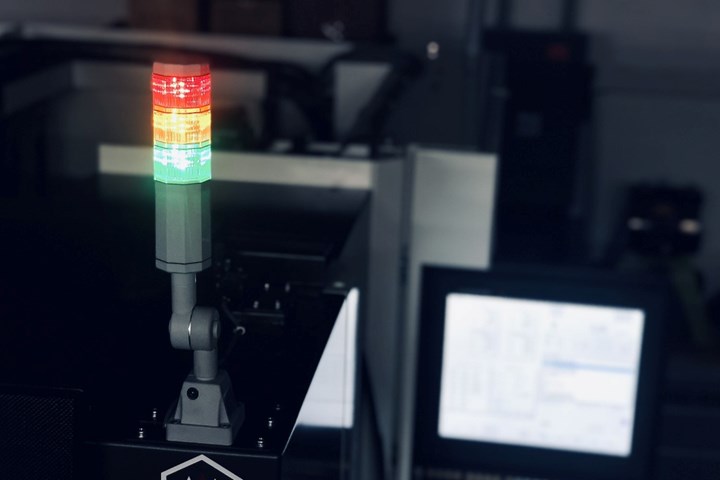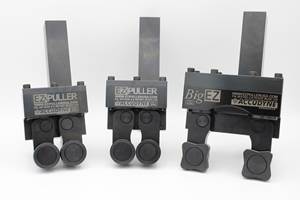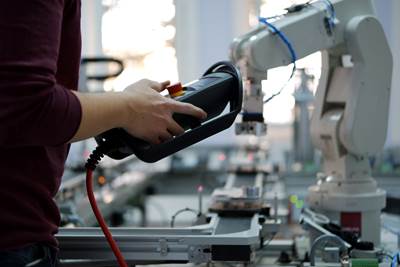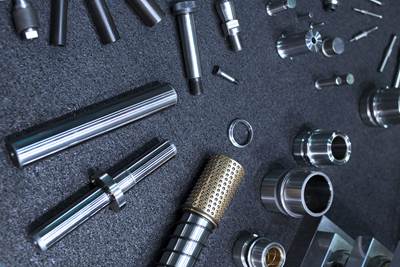Securing Processes for Automation
Securing a process for reliable automation takes much consideration, but many modern machines have features that can help.
Reader Question:
As we automate more, one concern my operators have had is protecting the machines. Their concerns center around the “what ifs” such as “what if a tool breaks mid-cycle” or “what if a part is misloaded and we don’t catch it?” Can you offer some ideas to help put some confidence in our process so we can trust it unattended, night after night?

Process security requires taking steps in many areas, but the benefits of lights-out automation can be revolutionary for a job shop. Photo courtesy of Way of the Mill.
Miller’s Answer:
The what-if game can be burdensome, but in this case, some concern can be a good thing. An unattended, unprotected process can make a lot of bad parts in a hurry — or worse, hurt the machine.
You should target what I term “process security.” This means implementing systems to predict, catch or otherwise prevent unwanted events. Full security requires a layered approach to these systems, involving everything from process knowledge to machine features, fixturing and tools, programming and shop process.
All corners of our industry agree that the best processes to automate are your most mature. By selecting these jobs, you are selecting a known, proven, hopefully well-documented entity. In other words, automating established jobs means you’re not trying to solve process problems while also solving new automation hiccups.
After choosing the right process, the next layer of security involves the machine. At a bare minimum, broken tool detection is a must. The horrors that can follow a broken tap are well-known. Tool life monitoring is another predictive measure that prompts users before tools break. Layering broken tool detection and tool life monitoring with a preventive measure such as spindle load monitoring will catch any other anomalies. Load monitoring can stop the machine for a misloaded part or broken inserts, and can even help catch unexpected events like mid-process part movement.
Whether you are loading pallets into a machine or loading raw billets into a common clamping solution, workholding and location strategy impacts success with lights-out production. Any workholding design with automation in mind should include some type of clamp confirmation that the robot can read, such as “air seat” detection or a proximity switch. Probing is also vital. The probe can be utilized to shift the work offset and accommodate small errors in location, while also creating an alarm for completely misloaded parts. Savvy programmers can write a cycle to send the part back to the robot and begin with a new piece, enabling the machine to continue producing after preventing a failed cycle.
An often-overlooked aspect of misload protection is coolant washdown to get chips away from the things your automation system relies on for clamping. Take the time to study where your process tends to build up chips and implement the changes needed to prevent build-up. This change could be a quick pass with your coolant on, a custom tool with through-spindle coolant or even machine table-mounted nozzles that run at the cycle’s end.
You can implement several simple programming techniques to secure processes. Loading work offsets every cycle at the beginning of the program will prevent any changes made at the machine during the day from causing a wreck during evening runs. In addition, it’s easy to implement tool height checks into any process. Some controllers offer a built-in upper and lower limit as part of their tool management system, but it is also simple to write a custom macro to confirm the actual tool height against a known nominal tool height.
Beyond securing processes via machines, fixtures and programming, you must develop best practices and procedures for your staff to follow regarding your processes. Especially important are protocols for confirming an alarm or event, properly troubleshooting these events, restarting programs once any issues have been resolved and setting expectations for risk. If the raw material is relatively inexpensive, it may be better to scrap a half-completed part and start fresh than to try and rescue it. If your staff isn’t clear on this, they may take unnecessary risks thinking they are doing what is right to save cost.
Documentation goes a long way in process development. Having process information that is correct, current and clear means you have a baseline to fall back on in case of problems, while also providing a good aid for communicating process standards to off-shift or new personnel.
All the solutions above are free or relatively cheap. They are meant to prevent a dangerous or costly event to the machine, and often result in higher-quality parts by promoting consistency. These solutions rely on best practices or existing machine systems to put layers of safety into a process, requiring only some effort or training to implement.
The next step will be to take your secure process to a high-uptime process. This will involve systems like spare or redundant tooling, coolant monitoring systems, offline toolpath verification and remote machine monitoring. These will require investment, so they can be considered projects to implement over time. Start with what’s free and available currently at your shop while also planning for that next big process leap.
Want Miller’s help solving your machining challenges? John Miller, owner of Way of the Mill CNC training and consulting, will use his machining expertise to answer a reader-submitted question in his column each month. Submit your question here!
Related Content
4 Steps to a Cobot Culture: How Thyssenkrupp Bilstein Has Answered Staffing Shortages With Economical Automation
Safe, economical automation using collaborative robots can transform a manufacturing facility and overcome staffing shortfalls, but it takes additional investment and a systemized approach to automation in order to realize this change.
Read MoreZero-Adjustment Bar Pullers Simplify Turning Automation
Spring-loaded grippers and adjustable programming are enabling bar pullers to fulfill their promise to save time and money in CNC turning automation.
Read MoreCNC Machine Shop Honored for Automation, Machine Monitoring
From cobots to machine monitoring, this Top Shop honoree shows that machining technology is about more than the machine tool.
Read MoreFearless Five-Axis Programming Fosters Shop Growth
Reinvestment in automation has spurred KCS Advanced Machining Service’s growth from prototyping to low-and mid-volume parts. The key to its success? A young staff of talented programmers.
Read MoreRead Next
Overcoming Barriers to Machine Shop Automation
Industrial automation using robots has improved productivity for operations large and small — so why do some manufacturers shy away from it?
Read MoreSolving Holemaking Issues: Boring or Reaming?
Single-point boring and reaming are both excellent ways to meet high tolerances and finish requirements for hole making, but each has distinct specialties.
Read MorePreparing a Shop for Automation
Ensuring a stable, predictable production process can prevent automation from multiplying existing problems.
Read More











.png;maxWidth=300;quality=90)














